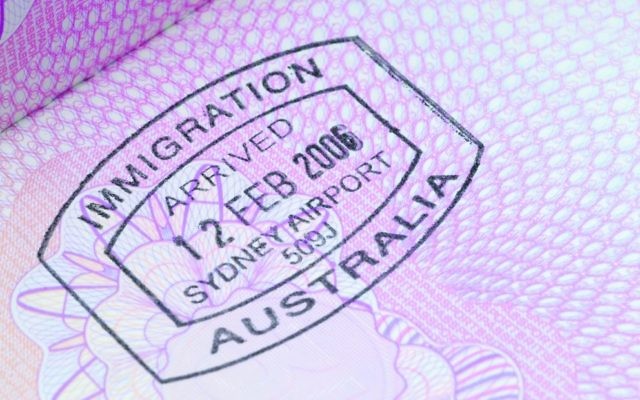Hands up if you were born here
Just as the great transforming feature of Australian history since 1945 has been the immigration story, so it’s been for Australian Jewry.
AS I begin writing, the Australian Bureau of Statistics population clock on their website records the resident population of Australia as 25,005,661. Last week it recorded 25,000,000. The live clock adds a person every 1 minute and 23 seconds. You can watch it tick over if you enjoy watching grass grow.
What I can’t tell you, at least not with the same degree of accuracy, is how many resident Jews there are in Australia. And I certainly can’t say how many Jews there are in Caulfield North, much less how many have “colonised” the migrant enclave bounded by Glick’s in Carlisle Street and Café D’Lish on Bambra Road.
As for how many came from South Africa or Poland, Johannesburg or Lodz, God only knows. And He’s not telling. Unless you live closer to the Adass Israel synagogue, Ripponlea, (a parallel universe to Caulfield North) where the communication with Him in “the cloud” is reportedly more direct and immediate.
The best I can do, therefore, is quote the most recent estimate of 113,000 in the Gen 17 Australian Jewish Community Survey. Which means that Jews represent only 0.45 per cent of the total Australian population. That’s point four five per cent – pretty much the same percentage as we’ve done for about the past 40 years and more.
At the same time, however, that figure makes Australian Jewry the eighth largest Jewish community in the world based on “Core Jewish Population” numbers, behind Argentina at seventh with 230,000, but ahead of Germany with 100,000. Although we’re in ninth place behind Germany based on their “Enlarged Jewish Population” estimate of 250,000, whereas ours is 135,000.
Israel is in first place with a “core” Jewish population of 6,589,000, and the United States is second with at least 5,700,000, although some estimate it to be as high as an “enlarged” 6,800,000.
As of April, the world’s “core” Jewish population, according to the doyen demographer Sergio DellaPergola, was estimated at 14,511,000, the “extended” numbers (includes Jews identifying as partly Jewish and non-Jews with Jewish parents) were 17,300,000, and the “enlarged” figure (includes non-Jewish members of Jewish households) was 20,200,000.
Just for the record, the world’s population live clock 10 seconds ago was 7,606,020,544 (I checked) – about 200,000 more than the same time 24 hours ago.
So add a million people this week if you’re reading this on Friday night. The “core” Jewish population therefore represents 0.19 per cent (less than a fifth of a percent) of the world’s population.
From the global to the utterly parochial. Just as the great transforming feature of Australian history since 1945 has been the immigration story, so it’s been for Australian Jewry.
From less than 30,000 Jews at the end of World War II, we doubled our numbers to 60,000 by the early 1960s, largely due to immigrants from Poland, Russia, Austria, Czechoslovakia, and Hungary. Since then we’ve doubled again, and since the 1970s the immigrants have come from the Former Soviet Union, South Africa, and Israel.
Which means that in many ways we are still an “immigrant” community. As the Gen 17 Survey points out, these “waves” of more recent immigration mean that 52 per cent of the NSW Jewish population and 43 percent of Victoria’s were born overseas.
This is “substantially higher” than the figure for the total Australian population of 28 per cent. About which percentage we’ve heard a fair amount of debate, controversy and misinformation recently in the wider Australian arena, where it’s too often been mixed in with other questions about immigration and infrastructure, assimilation and integration, population and pluralism.
But what about our own Jewish community? How have we coped with the FSU, South African and Israeli immigrants?
Here the Gen 17 survey reports the encouraging findings that despite the varying settlement and adjustment problems, not least being finding ready acceptance in some sections of the established Jewish communities, 91 per cent of the FSU immigrants said they were more satisfied with life in Australia now than their former homeland. So did 80 per cent of South Africans, and 69 per cent of Israelis.
These findings deserve close scrutiny. Not only do they remind us about our most recent past; they can inform our planning for possible future Jewish immigration.
Because such immigration will come. Whether from France, Eastern Europe, South America, or even Britain.
Australia is, and will be, an immigrant society. Australians Jews are, and will be, an immigrant community.
SAM LIPSKI is CEO of the Pratt Foundation and a former editor of The AJN.


comments